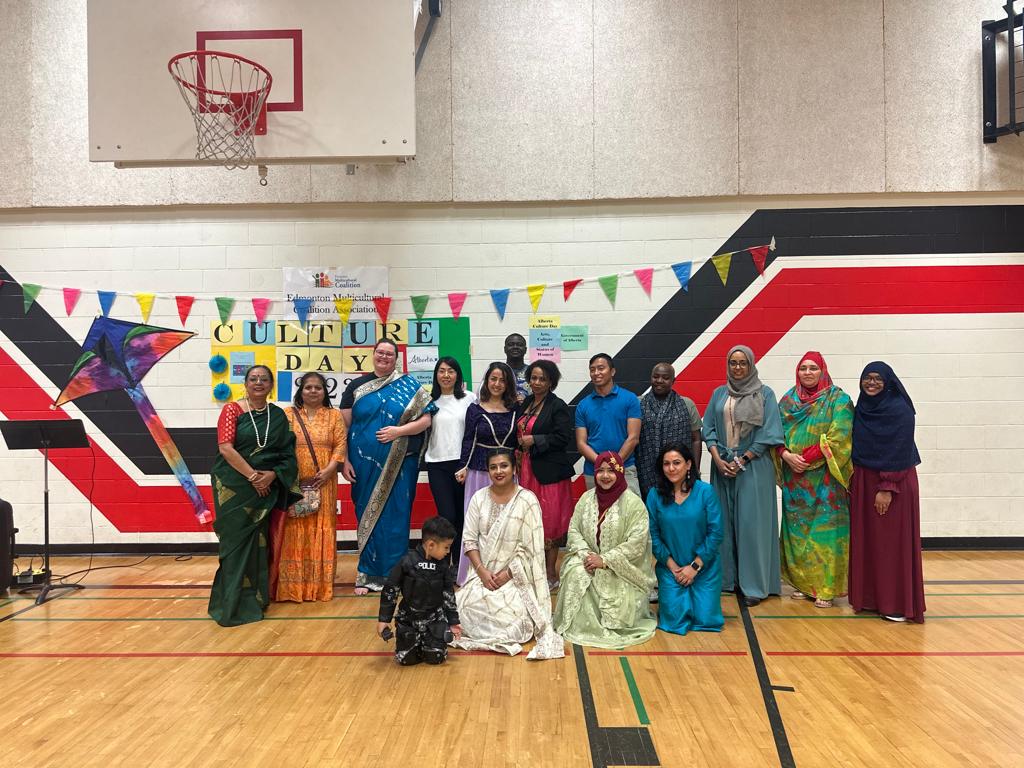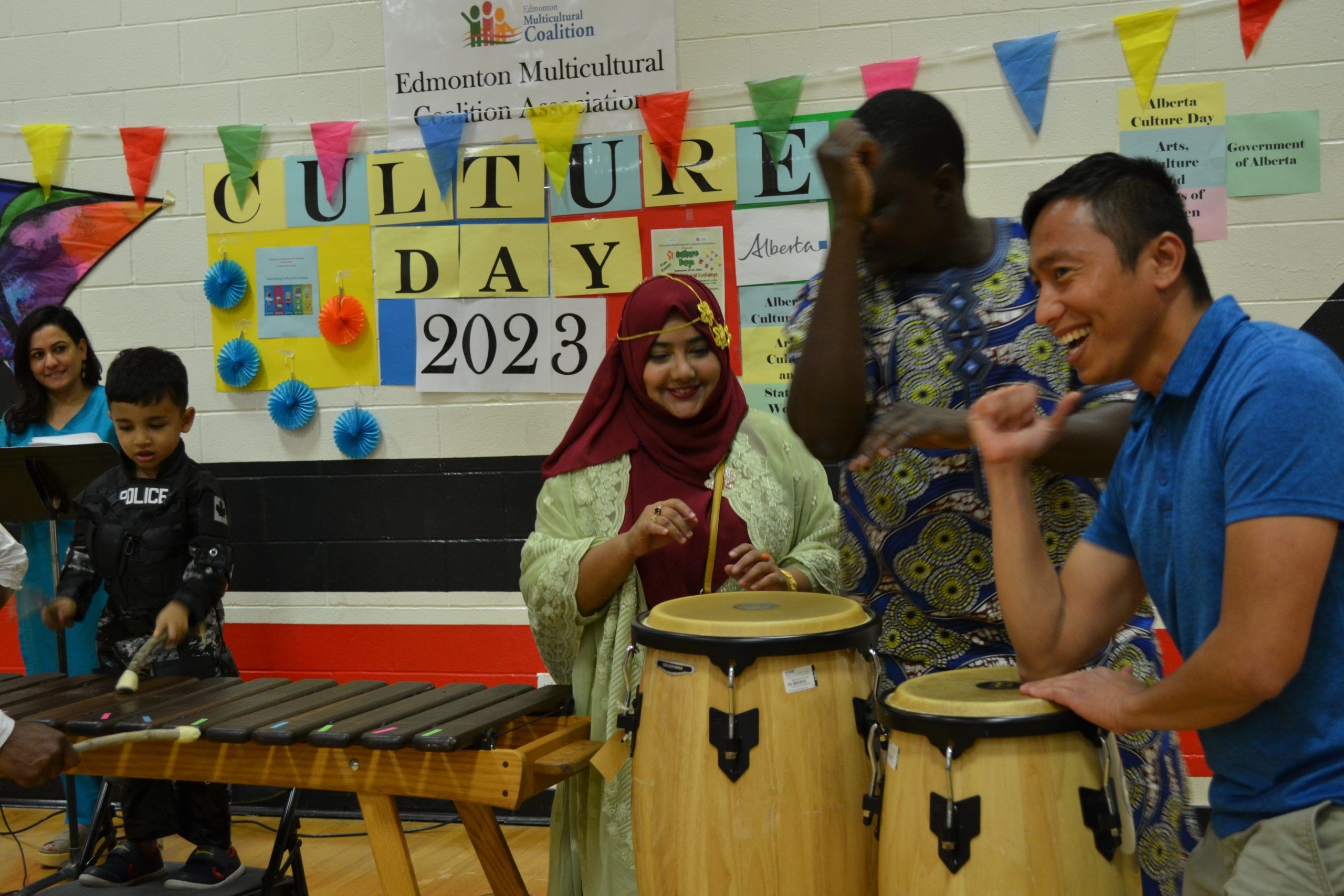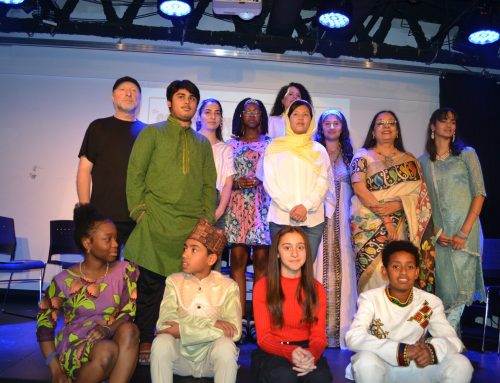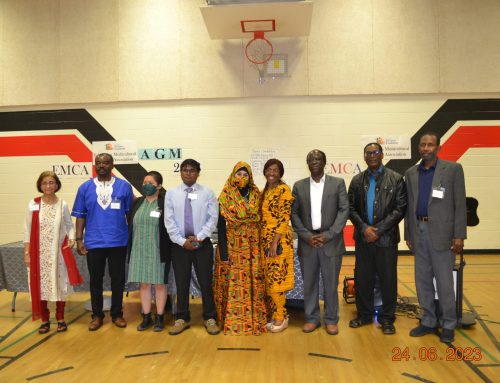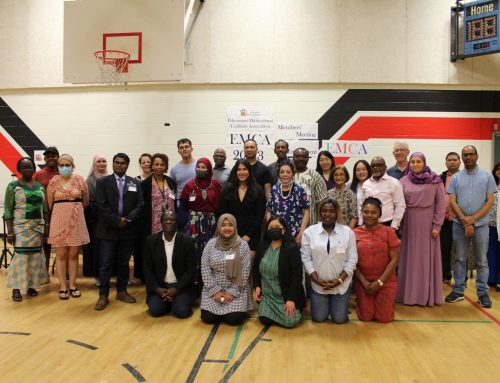The Edmonton Multicultural Coalition Association (EMCA) hosted a two-day event on September 23 and 24 2023, titled Nourishing Cultural Exchange. The events were funded by the Government of Alberta. Similar to our Culture Days event last year, our goal is to provide opportunities to showcase and integrate diverse ethnocultural communities with the mainstream Edmonton community.
On the Day one of the event, there were different stations set up for the visitors from where they can get oriented with different cultural background. The stations were naming as Color of Joy-Ethnocultural Paintings, Crafty Connections, Ethnocultural Games, Beautify with Henna, Nepalese Instrumental show, and Draping the Culture.
Colors of Joy Painting Station – Ethnocultural Paintings
Through that activity, the diversity of different cultures were showcased and people were encouraged to express themselves through art and connect with others of different cultures and generations. A local artist used her own painting skills and ideas to make a masterpiece for the Coalition based on the theme of promoting multiculturalism.
Crafty Connections Station – Traditional Paper Crafts
Traditional crafts were made on both days of the event using colorful paper, for example, paper boats, paper fans, Chinese paper lanterns, paper snake, origami, Filipino paper dolls, etc. People from different ethnocultural communities and different ages made crafts of their choice which had an ethnocultural value.
Games from back Home Station – Ethnocultural Games
Carrom, sungka, ludo or snake & ladder, Chess, etc. were played on both days of the event. Thus, the event became a great opportunity for people to connect with their culture and with each other through the shared experience of playing traditional games.
Beautify with Henna Station
People enjoyed different patterns of Henna and learned Asian Henna design, showing their hands for pictures.
The Nepalese Instrumental show
Naumati Naad is a traditional Nepali ensemble consisting of nine different musical instruments, typically played during festive and ceremonial occasions. Participants of the event were allowed to play those musical instruments which cultivated intercultural communication and exchange of culture.
I Look Beautiful Corner – Draping the culture
It was a wonderful opportunity to explore the beauty of different cultures by draping traditional dresses, jewelries, scarfs, hats, and traditional attire and creating memories. For example, women from different ethnicities such as Indigenous, Eritrean, Mexican, Chinese, etc. draped themselves with beautiful Indian attire (Sharee) and jewelries thus nourishing the cultural exchange. A display board was set up beside the station to show pictures of Shari weaving instruments and machines. The history of the Shari was also demonstrated on the wall with a mannequin wearing the Sharee and traditional Jewelry.
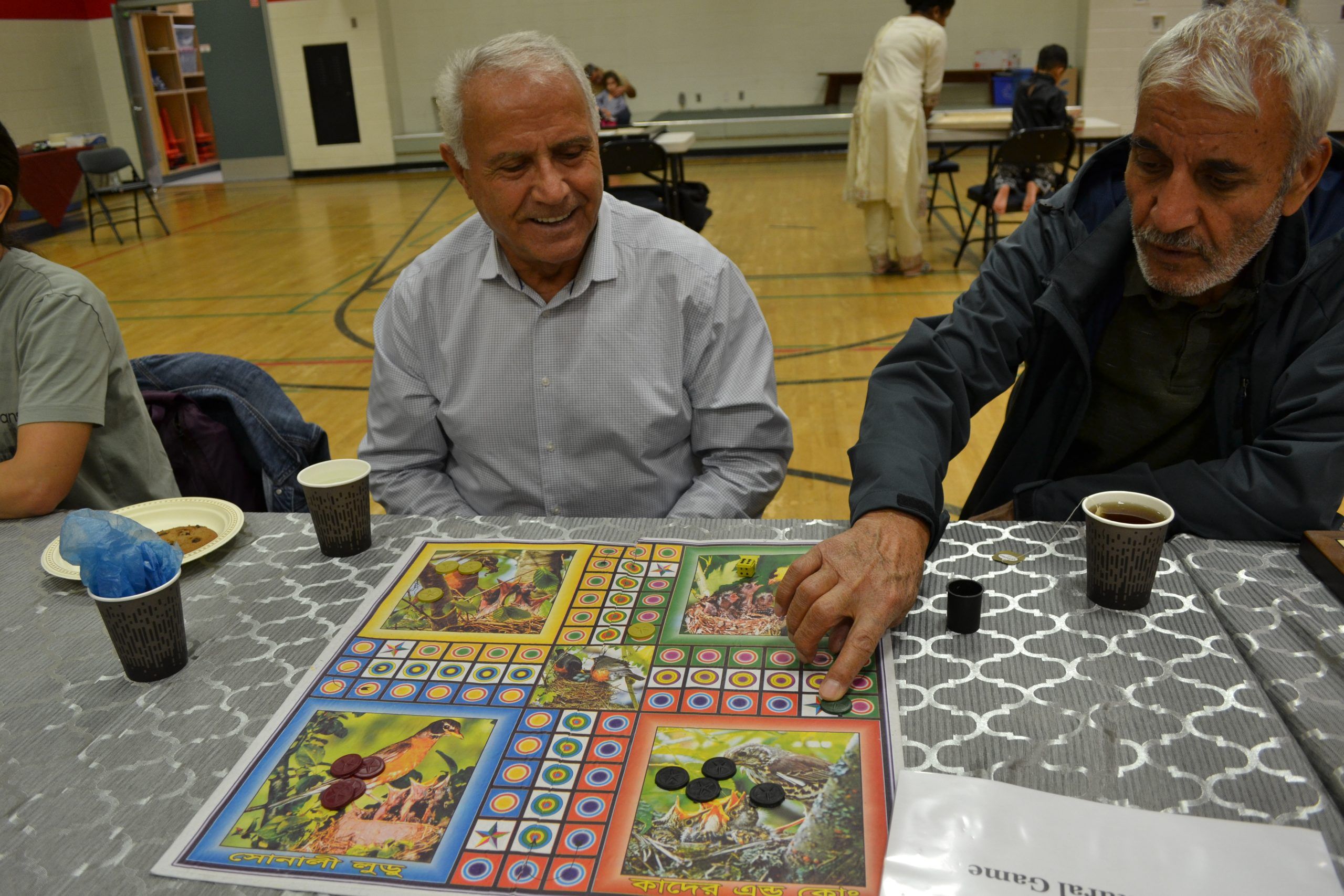
And then on the Day two of the event, in addition to first days components, there were ethnocultural artistic performances where performers from different countries showcased their talents, including the Filipino, Sudanese, Bangladeshi, Traditional Marimba band, Chinese, Nepalese, and Azerbaijani communities. The event provided an extensive scope for nourishing and exchanging their cultural identities. For example,
- A group of Filipino seniors in three different ethnic dresses performed several dance performances with their traditional Filipino music.
- The Chinese mom & son duo was much appreciated among the participants.
- There was an African Marimba Band with traditional drums which was an interactive session, where participants played the instruments and learned how to play drums.
- Besides, Sudanese bridal dance and Azerbaijani dance attracted the participants to take part in the dances promptly and learn the new dance steps.
- Bangladeshi song was another great entertainment for the participants.
It was a wonderful celebration of diversity and cultural heritage through this event. Ethnocultural performances were a great way to showcase the unique customs and traditions of various communities and provided an opportunity for performers to express their talents and creativity. By showcasing their traditional dances, music, and attire, performers helped to keep these cultural practices alive and ensured that they are not lost over time. Encouraging instant performances from participants was also a great idea, as it allowed for even more spontaneous and diverse cultural expression, showcasing the richness and diversity of the different communities presented at the event, and fostering greater understanding and appreciation among attendees.
Success stories:
- Azerbaijani Dance: the dance started as a solo performance, but it turned into a public performance because the music and the dance was inclusive and encouraged everyone in the audience to participate in the dance steps.
- When the Nepalese solo performer was playing romantic music, one of our community animators (African) couldn’t resist himself to start dancing his traditional African dance. Then another animator (Azerbaijani) joined with him in the dance. After that, a sweet African teenager came up to join with their dance and followed their dance steps very nicely. It was very enjoyable to watch the different ethnocultural dances with traditional attire in combination with Nepalese music which clearly pictured the interculturalism among the participants.
- Another success story was about draping the culture station. It was a wonderful opportunity to explore the beauty of different cultures by draping traditional dresses, jewelries, scarfs, hats, and traditional attire and creating memories. For example, women from different ethnicities such as Indigenous, Eritrean, Mexican, Chinese, etc. draped themselves with beautiful Indian attire (Sharee) and jewelries thus nourishing the cultural exchange. We also draped a wedding sharee on a mannequin with wedding jewelry and put a face picture of a beautiful bride on the top of it. Audiences (both male and female) enjoyed capturing pictures with the beautiful mannequin bride.
- Our local painter was devoted to creating a masterpiece of art based on the theme of promoting multiculturalism. She used traditional coins in the art piece. She also explained her painting themes to the audiences happily. In addition, she showcased some of her art pieces in the event which was another great attraction for the participants.
- People enjoyed the traditional food on both days of the event.
We are immensely proud of the community animators and the EMCA staff who worked hard in getting funding for us to hold this event again. They also applied their skills and enthusiasm in organizing the various components of the event. The collection of activities that guests can freely explore provided a weekend that is educational and memorable.
We are proud that the EMCA was a safe platform for such an event, where people from cultural communities can showcase different facets of their life and have a celebration of simply being themselves. Building bridges and providing skills and capacity is the core of the coalition’s mission and the event’s success is an example of just that.
By Mitali Banerjee
